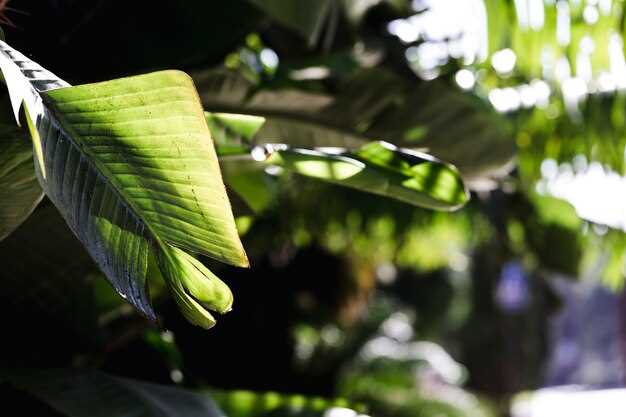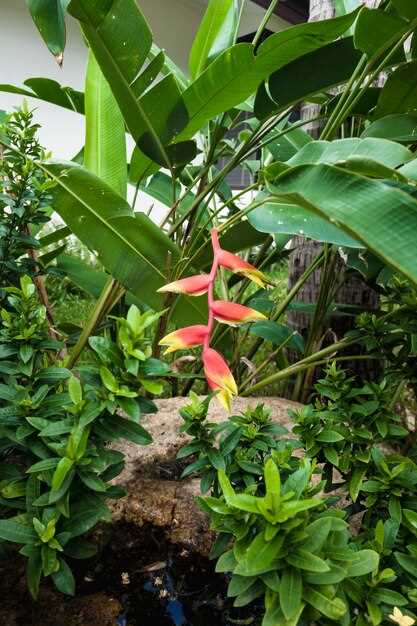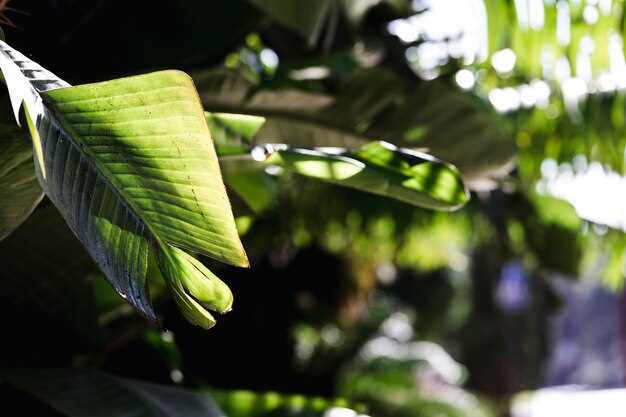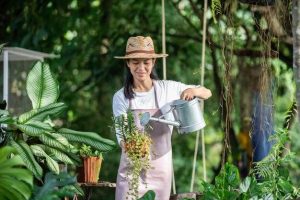
Tropical Plants for Your Nicaraguan Garden: A Guide to Lush Landscaping
If you want to create a stunning tropical garden in Nicaragua, consider incorporating Heliconias and Bromeliads. These plants thrive in the local climate and provide striking colors and unique shapes that instantly elevate any outdoor space. Heliconias, with their vibrant red, yellow, and orange flowers, not only attract hummingbirds but also serve as excellent focal points in garden beds.
Bird of Paradise is another captivating choice. With its exotic blooms resembling a colorful bird in flight, it flourishes throughout Nicaragua. Position these plants in well-drained soil, and they’ll reward you with their impressive display year after year. Pair them with the lush foliage of Alocasia and Philodendron for a truly immersive tropical experience.
Add texture and height to your garden by introducing Palm Trees. Varieties such as Royal Palm and Coconut Palm provide a tropical feel while offering shade and a backdrop for other colorful plants. Ensure proper spacing between your palms and other flora to allow for their impressive growth and spread.
Incorporate Orchids for a delicate touch. Native varieties like Guarianthe skinneri, known as the guaria morada, bloom profusely in vibrant purples and pinks. Place these epiphytic orchids on trees or in hanging baskets, where they’ll thrive in Nicaragua’s humidity.
Lastly, don’t overlook the importance of local native species like Vamongue and Guanacaste trees. These plants not only complement the tropical aesthetic but also support local wildlife, making your garden a sanctuary for birds and beneficial insects.
Choosing the Right Tropical Plants for Your Climate

Select plants that thrive in Nicaragua’s warm and humid climate. Focus on species that are tolerant of both high temperatures and moisture levels.
- Consider native plants: Species like Coral Hibiscus (Hibiscus rosa-sinensis) and Bamboo (Bambusa spp.) grow well and require less maintenance.
- Palm trees: Choose varieties such as Coconut Palm (Cocos nucifera) and Areca Palm (Dypsis lutescens) for a tropical feel.
- Flowering plants: Bird of Paradise (Strelitzia reginae) and Heliconia species add bright colors and attract pollinators.
- Foliage plants: Philodendron and Monstera varieties bring lush greenery and thrive in shaded areas.
- Ground cover: Consider Sesbania and Lantana to prevent soil erosion while providing vibrant blooms.
Assess your garden’s microclimate. Identify areas that receive full sun versus those shaded by structures or trees. This will help you determine the ideal spots for sun-loving versus shade-tolerant plants.
Check soil quality. Many tropical plants prefer well-drained, sandy soil but will also thrive in loamy conditions. Conduct a soil test to determine your garden’s pH and nutrient levels. Adjustments may be necessary for optimal growth.
Water availability plays a significant role. Ensure a reliable irrigation source, especially during the dry season. Native plants often require less water, making them ideal for sustainable gardening.
Incorporate variety while maintaining harmony. Mix heights, colors, and textures to create an inviting landscape. This diversity attracts wildlife and enhances the overall appeal of your garden.
Finally, consider local pests and diseases. Choose resistant varieties or those that have natural pest deterrents to minimize chemical interventions.
Soil Preparation for Tropical Gardening in Nicaragua

Begin soil preparation by testing pH levels; aim for a range of 6.0 to 7.0 for optimal plant growth. Use a home testing kit or send samples to a local agricultural extension office for accuracy.
Incorporate organic matter into the soil. Compost, aged manure, or leaf mold improves soil structure and adds nutrients. Aim for a minimum of 25% organic matter mixed into the top 12 inches of soil.
Enhancing Drainage
Due to Nicaragua’s heavy rains, good drainage is crucial. If your soil retains water excessively, consider adding coarse sand or perlite. This keeps the soil aerated and prevents root rot in tropical plants.
Building raised beds is another option to enhance drainage. Create beds at least 12 inches high and ensure they are spaced adequately to allow for air circulation and access.
Nutrient Management
After improving drainage, focus on nutrients. Apply a balanced fertilizer during soil preparation. A slow-release fertilizer with equal parts nitrogen, phosphorus, and potassium (like a 10-10-10 mix) supports plant growth throughout the season. Adjust based on soil tests for better results.
Consider mulching around plants after establishing them. Organic mulch like straw or wood chips helps retain moisture, suppress weeds, and gradually enriches the soil as it decomposes.
Regularly check soil moisture and adjust your watering practices, especially during the dry season. Maintaining consistent moisture levels will ensure that your tropical garden thrives in Nicaragua’s unique climate.
Watering Techniques for Thriving Tropical Plants

Water your tropical plants early in the morning or late in the afternoon to reduce evaporation and allow plants to absorb moisture effectively. Aim for deep watering sessions, which encourage roots to grow deeper into the soil. Use a soaker hose or drip irrigation to ensure consistent moisture without oversaturating the surface. This method targets the root zone directly and minimizes water waste.
Adjusting Watering Based on Weather
Monitor rainfall and adjust your watering schedule accordingly. During the rainy season, cut back on watering to prevent root rot. Conversely, during dry months, check the soil moisture regularly. Stick your finger into the soil about an inch deep; if it feels dry, it’s time to water. Tropical plants often prefer consistently moist, but not soggy, soil.
Considerations for Soil Type
The soil type impacts how often and how much you should water. Sandy soils drain quickly, requiring more frequent watering, while clay soils retain moisture longer. Incorporate organic matter into your soil to improve its structure and moisture retention, enhancing the health of your tropical plants.
Fertilization Tips Tailored for Nicaraguan Flora

Apply organic fertilizers to enrich Nicaraguan soil. Use compost made from local materials like coffee pulp or banana peels. This boosts nutrient levels and improves soil structure, promoting healthy root development.
Select the Right Ratio
Choose fertilizers with a balanced N-P-K ratio (nitrogen, phosphorus, potassium) suitable for your plants. For leafy varieties like taro, opt for a higher nitrogen content. For flowering species such as hibiscus, focus on phosphorus to enhance blooms.
Timing is Key
Fertilize during the rainy season, typically from May to October. This ensures proper nutrient absorption and minimizes evaporation. Start with a light application and observe your plants’ response, adjusting as needed based on growth and color.
Monitor pH levels, aiming for a range of 5.5 to 6.5 for optimal nutrient uptake. If necessary, amend the soil with lime to raise pH or sulfur to lower it. Regular testing can guide your fertilization strategy.
Mulch around plants to retain moisture and suppress weeds. Organic mulches like straw or shredded leaves break down over time, adding nutrients back into the soil.
Invest in slow-release fertilizers to provide a steady supply of nutrients, reducing the frequency of applications. This approach fosters a consistent growing environment for your tropical plants.
Finally, be mindful of over-fertilizing. Yellowing leaves can indicate nutrient burn, prompting a reevaluation of your fertilization approach. Focus on promoting a healthy balance for thriving gardens.
Pest Management Strategies for Your Tropical Garden
Implement natural pest repellents like neem oil. This organic option disrupts the life cycle of common pests such as aphids and spider mites while being safe for beneficial insects. Dilute neem oil in water as per package instructions and spray it on affected plants every few weeks.
Encourage beneficial insects like ladybugs and lacewings by planting native flowers. These insects naturally control pest populations. Consider adding species such as marigold and yarrow to attract these helpful allies into your garden.
Optimize your garden layout by rotating crops. This strategy confuses pests that become accustomed to specific plants, reducing infestations. Change the location of your plants yearly to keep pests at bay while improving soil health.
Use Physical Barriers
Install insect netting or floating row covers over your plants. This simple measure prevents pests from reaching vulnerable seedlings and young plants, creating a physical barrier against common threats like caterpillars and beetles.
Regularly inspect your plants for signs of damage or infestation. Early detection allows for swift action, which prevents pest populations from growing. Remove affected leaves or use manual methods to eliminate pests without resorting to chemicals.
Hand-Picking Techniques
For larger pests like caterpillars and slugs, hand-picking works effectively. Spend time around dusk or early morning to find and remove these pests manually. Dispose of them far away from your garden to prevent their return.
Integrate companion planting. Pairing certain plants can deter pests naturally. For example, plant basil near tomatoes to repel hornworms, enhancing both plant health and growth.
Seasonal Care Routines for Tropical Plants
Adjust watering frequency based on the rainy and dry seasons in Nicaragua. During the dry season, which typically spans from November to April, water your tropical plants deeply once a week. In the rainy season, reduce watering and let nature provide the moisture.
Fertilize every 6-8 weeks during the growing season (April to September) with a balanced, slow-release fertilizer to support growth. In the cooler months, cut back on feeding as plants enter a resting phase.
Pest control requires vigilance. Inspect plants regularly for signs of pests like aphids or spider mites. Introduce beneficial insects such as ladybugs to manage pest populations naturally.
- Spring: Prune back leggy growth and dead leaves to encourage bushier growth. Repot any overcrowded plants into larger containers to promote healthy root development.
- Summer: Ensure adequate shade during the hottest part of the day to prevent leaf scorch. Monitor humidity levels and mist plants if necessary to maintain moisture.
- Fall: Gradually reduce watering as temperatures drop. Remove fallen leaves to prevent fungal issues.
- Winter: Keep plants indoors if temperatures drop below 50°F (10°C). Limit watering and maintain a stable, warm environment to aid dormancy.
Mulching around plants helps retain soil moisture and regulates temperature. Use organic materials like wood chips or cocoa hulls.
Rotate plant positioning every few months to ensure even sunlight exposure, especially for potted tropicals. This promotes balanced growth and prevents leaning.
Monitor for diseases and treat promptly with organic fungicides or horticultural oils. Early detection can significantly improve outcomes.
Creating Microclimates for Diverse Tropical Species
Utilize natural features to establish microclimates in your Nicaraguan garden. Position large plants or trees strategically to create shaded areas that buffer against harsh sun exposure. This allows shade-loving species, such as ferns and certain types of orchids, to thrive.
Incorporate windbreaks using hedges or dense shrubbery. These barriers help protect delicate plants from strong winds, particularly during the dry season. Consider using native species, which are well-adapted to the local environment and can support biodiversity.
Take advantage of elevation changes within your garden. Higher areas tend to experience better drainage and more sunlight, ideal for succulent varieties and drought-resistant plants. In contrast, lower areas may retain more moisture, suitable for tropical herbs and moisture-loving flowers.
To enhance humidity levels, create natural reservoirs with ponds or water features. This not only supports aquatics and amphibians but also increases humidity for nearby plants. Pair this with the strategic placement of larger foliage plants around bodies of water to maximize the effect.
| Microclimate Type | Best Plant Species |
|---|---|
| Shaded Areas | Ferns, Orchids |
| Windbreak Zones | Native Shrubs, Hedges |
| Well-Drained High Areas | Succulents, Cacti |
| Moist Low Areas | Herbs, Tropical Flowers |
| Humid Surroundings | Aquatic Plants, Tropical Ferns |
Regularly monitor temperature and moisture levels in each microclimate. Adjust watering schedules and mulching practices based on specific needs. By carefully managing these elements, you’ll create thriving environments for a wide range of tropical species, enhancing the beauty and diversity of your garden.
Design Ideas for Lush Tropical Garden Landscaping
Create layers in your garden by mixing taller plants like palm trees with mid-height shrubs such as hibiscus and lower ground covers like ferns. This not only adds depth but also captures the essence of a tropical jungle. Incorporate path materials like decomposed granite or river stones to enhance the greenery and provide structure to your garden.
Color Schemes and Plant Combinations
Select plants with varying hues to enrich the visual appeal. Combine bold colors like the magenta of bougainvillea with the rich greens of philodendrons. Adding flowering plants such as birds of paradise can introduce bright oranges and yellows, creating striking visual contrasts. Pay attention to seasonal blooms to ensure year-round interest.
Water Features and Focal Points
Integrate a small pond or fountain to bring tranquility to your garden. Surround it with moisture-loving plants like taro and canna lilies. Consider using large decorative stones or driftwood as focal points that draw the eye and create natural gathering spots. Hanging lanterns or solar lights can enhance the nighttime ambiance while highlighting key areas in your garden.
Video:
Tropical Gardening Landscaping Ideas || Creating a Lush Paradise at Home
Tropical Gardening Landscaping Ideas || Creating a Lush Paradise at Home by ICanGardening 7,306 views 1 year ago 5 minutes, 18 seconds
Q&A:
What are the best tropical plants for a garden in Nicaragua?
Some of the best tropical plants for a Nicaraguan garden include hibiscus, bird of paradise, palms, bougainvillea, and banana plants. Hibiscus provides colorful flowers and thrives in the warm climate, while bird of paradise offers unique foliage and exotic blooms. Palms add a tropical feel and provide shade. Bougainvillea brings vibrant color year-round, and banana plants not only add greenery but also produce fruit, making them a practical choice.
How do I care for tropical plants in Nicaragua’s climate?
Caring for tropical plants in Nicaragua involves ensuring they receive adequate sunlight, as most prefer full sun. Regular watering is necessary, especially during dry spells, but be careful not to overwater as this can lead to root rot. Fertilizing every few months with a balanced fertilizer can help promote growth. Additionally, consider mulching around the plants to retain soil moisture and suppress weeds.
Are there any pest issues I should be aware of when growing tropical plants in Nicaragua?
Yes, several pests can affect tropical plants in Nicaragua. Common issues include aphids, spider mites, and whiteflies. Regularly inspect your plants for signs of infestation. Using insecticidal soap or neem oil can help manage these pests. It’s also beneficial to encourage beneficial insects, like ladybugs, which naturally help control pest populations.
Can I grow fruits in my tropical garden in Nicaragua?
Yes, many fruits can thrive in a tropical garden in Nicaragua. Consider planting papaya, mango, guava, or pineapples, as these fruits grow well in warm, humid conditions. They not only provide delicious harvests but also add to the lush aesthetic of your garden. It’s important to ensure proper spacing and care for these plants to encourage healthy fruit production.
What are some design tips for creating a tropical garden in Nicaragua?
When designing a tropical garden in Nicaragua, focus on layers by mixing tall plants, like palms, with medium and low-growing ones, such as ferns and ground covers. Creating pathways with natural materials can enhance the look while allowing easy access. Use bold colors and varied textures to create visual interest. Incorporating water features like small ponds or fountains can also contribute to the serene ambiance often found in tropical gardens.
What are some of the best tropical plants to include in a Nicaraguan garden?
There are several tropical plants that thrive in the Nicaraguan climate. Some popular choices include Bougainvillea, known for its colorful bracts; Heliconias, which offer stunning flowers; and Palms, such as the Royal Palm, which add a classic tropical feel. Other great options are Plumeria for its fragrant blooms, and various types of Hibiscus that provide vibrant colors throughout the year. Consider the specific conditions of your garden, such as sunlight, soil type, and the amount of water available, to choose the best plants.
How can I maintain my tropical garden in Nicaragua throughout the year?
Maintaining a tropical garden in Nicaragua requires regular care due to the warm and humid climate. Start by watering your plants consistently, as tropical plants generally need plenty of moisture. Mulching can help retain soil moisture and reduce weeds. Pruning is also important to encourage healthy growth and flowering. Be vigilant about pests, as they can thrive in this environment; using natural repellents or introducing beneficial insects can help. Additionally, fertilizing your plants with organic compost can boost vitality. Seasonal plant rotation and reseeding may also be beneficial for maintaining color and interest in your garden year-round.





